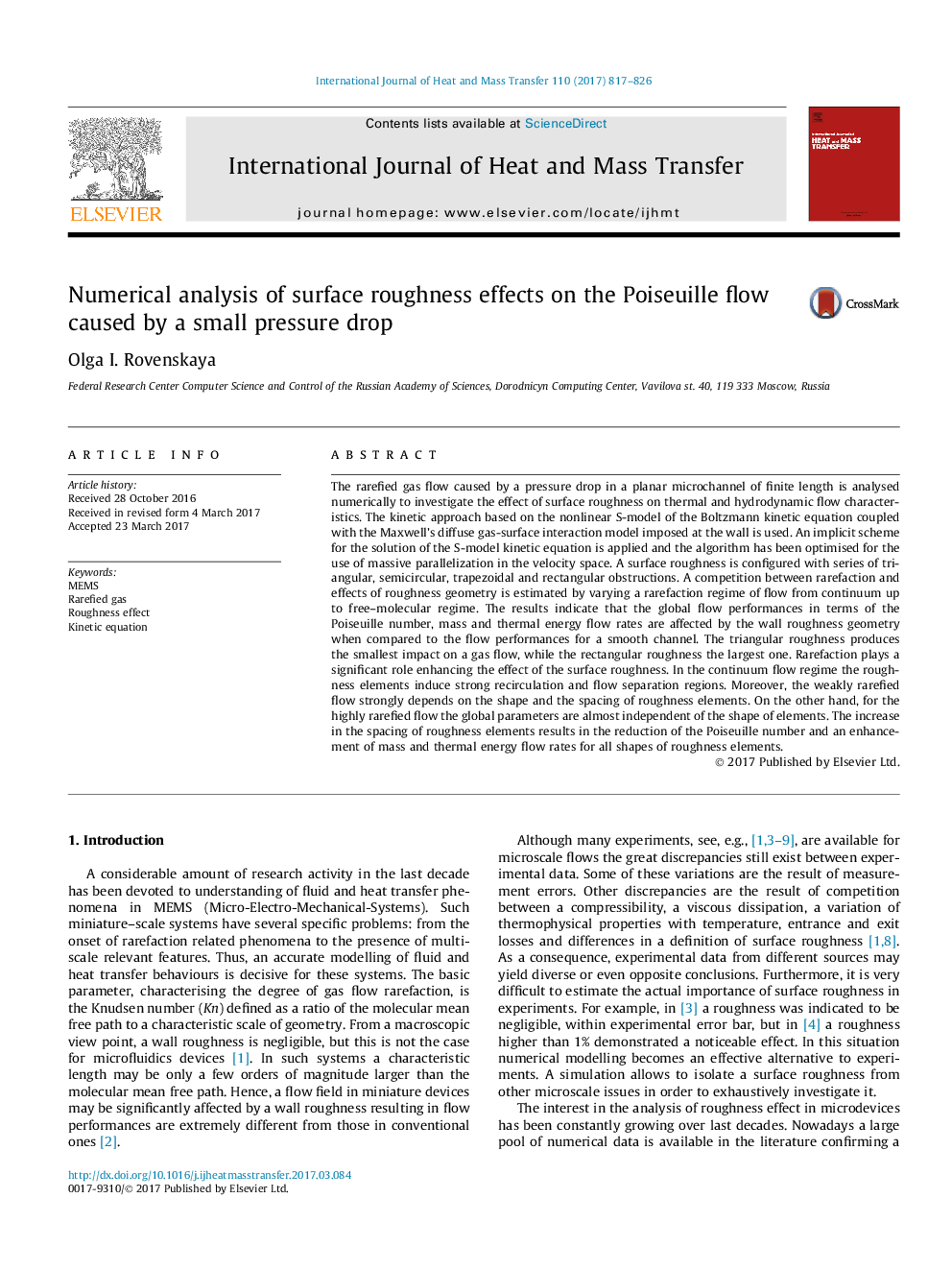| کد مقاله | کد نشریه | سال انتشار | مقاله انگلیسی | نسخه تمام متن |
|---|---|---|---|---|
| 4993611 | 1458031 | 2017 | 10 صفحه PDF | دانلود رایگان |
عنوان انگلیسی مقاله ISI
Numerical analysis of surface roughness effects on the Poiseuille flow caused by a small pressure drop
دانلود مقاله + سفارش ترجمه
دانلود مقاله ISI انگلیسی
رایگان برای ایرانیان
کلمات کلیدی
موضوعات مرتبط
مهندسی و علوم پایه
مهندسی شیمی
جریان سیال و فرایندهای انتقال
پیش نمایش صفحه اول مقاله

چکیده انگلیسی
The rarefied gas flow caused by a pressure drop in a planar microchannel of finite length is analysed numerically to investigate the effect of surface roughness on thermal and hydrodynamic flow characteristics. The kinetic approach based on the nonlinear S-model of the Boltzmann kinetic equation coupled with the Maxwell's diffuse gas-surface interaction model imposed at the wall is used. An implicit scheme for the solution of the S-model kinetic equation is applied and the algorithm has been optimised for the use of massive parallelization in the velocity space. A surface roughness is configured with series of triangular, semicircular, trapezoidal and rectangular obstructions. A competition between rarefaction and effects of roughness geometry is estimated by varying a rarefaction regime of flow from continuum up to free-molecular regime. The results indicate that the global flow performances in terms of the Poiseuille number, mass and thermal energy flow rates are affected by the wall roughness geometry when compared to the flow performances for a smooth channel. The triangular roughness produces the smallest impact on a gas flow, while the rectangular roughness the largest one. Rarefaction plays a significant role enhancing the effect of the surface roughness. In the continuum flow regime the roughness elements induce strong recirculation and flow separation regions. Moreover, the weakly rarefied flow strongly depends on the shape and the spacing of roughness elements. On the other hand, for the highly rarefied flow the global parameters are almost independent of the shape of elements. The increase in the spacing of roughness elements results in the reduction of the Poiseuille number and an enhancement of mass and thermal energy flow rates for all shapes of roughness elements.
ناشر
Database: Elsevier - ScienceDirect (ساینس دایرکت)
Journal: International Journal of Heat and Mass Transfer - Volume 110, July 2017, Pages 817-826
Journal: International Journal of Heat and Mass Transfer - Volume 110, July 2017, Pages 817-826
نویسندگان
Olga I. Rovenskaya,